Read the story of our Toyota RAV4 restoration project as we locate, buy and restore an early example of the original compact SUV and add it to our heritage fleet of vehicles.
Until the launch of the production RAV4 in 1994 there was no such thing as the compact SUV segment, an omission that Toyota had identified eight years previously and later exposed to the world at the 1989 Tokyo Motor Show via the RAV-Four concept (below).
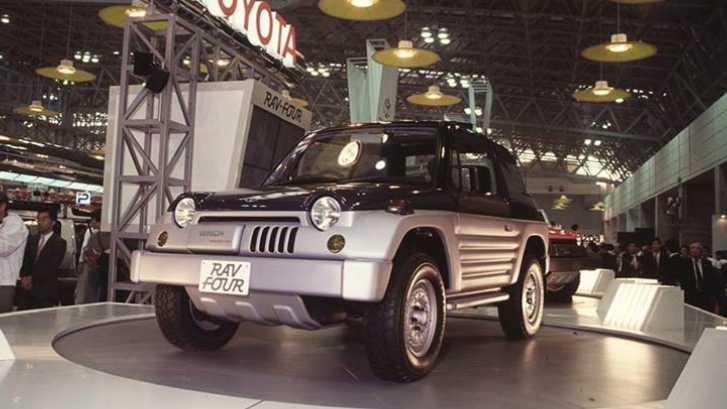
Now, however, the compact SUV segment is overflowing with wannabes. Among this crowd, the Toyota RAV4 has retained its market impact. It is estimated that more than 90 per cent of all RAV4 models ever produced are still on the road, and more examples are being sold globally than ever before in the car’s 20-year history.

To help celebrate this anniversary and gain a better understanding of how the RAV4 defined the genre, back in 2015 we invested in a first-generation Toyota RAV4 restoration project car to restore and add to the ranks of Toyota GB’s heritage fleet.
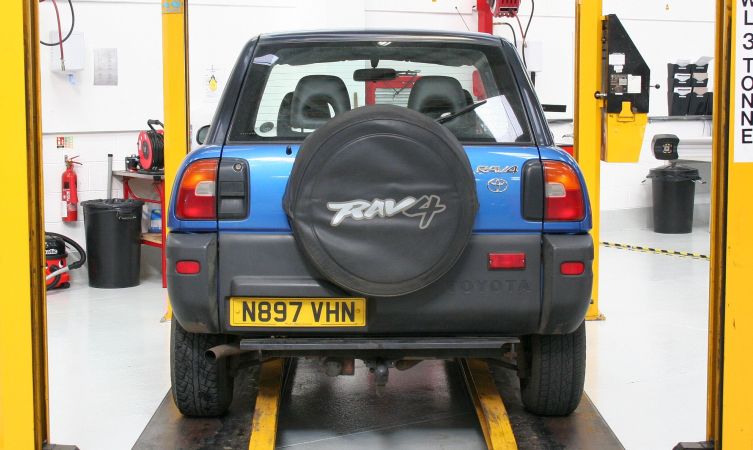
We wanted a Toyota RAV4 that was as true to the original concept as possible, which meant finding an early three-door model (the five-door arrived in 1995) with a manual gearbox. Of the two trim grades available from launch, we favoured the entry-level GS for being closer to the guiding principles of a car described as a ‘Sports Utility Vehicle’.
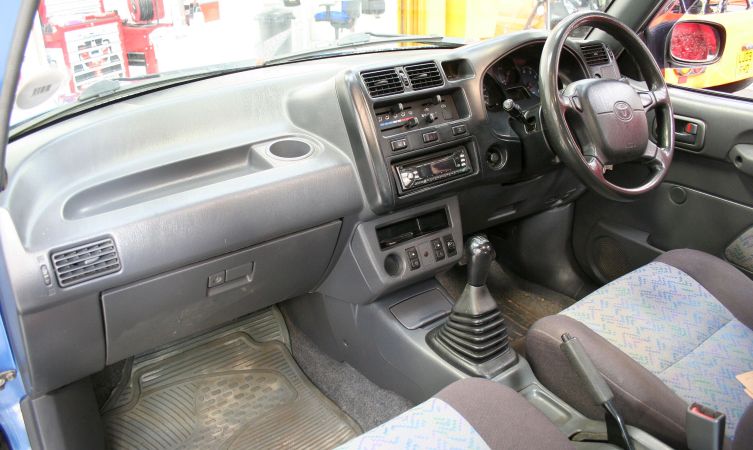
A number of additional factors guided us to this particular 1995 example, which was sold during the car’s first full year of being on sale. Its proximity was a consideration, but of more importance was its overall condition, detailed history file and reasonable 133,000 mileage. It also featured a number of official and unofficial accessories, such as arch extensions, tow bar, spare wheel cover, front styling bar and alloy wheels. However, the majority of these would be removed to restore the car to factory specification.
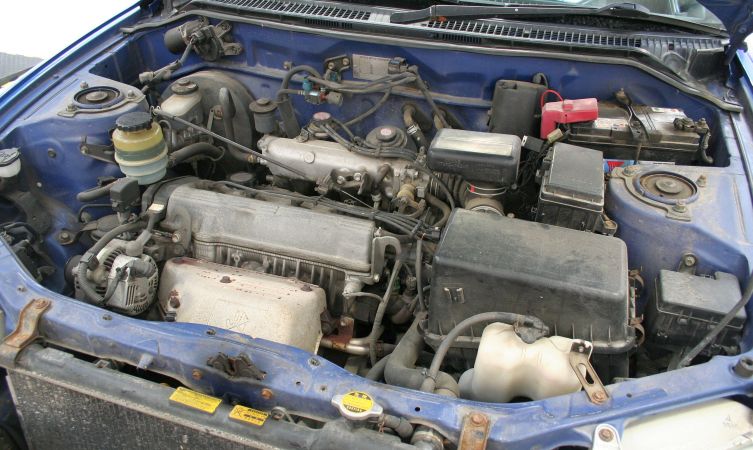
It wasn’t possible to give the car more than a superficial examination before purchase, but back in our workshop, we had the chance to give it a more thorough once-over. Its condition was deemed reasonable rather than good and clearly, there were some areas around the brakes and body that were particularly dubious. We quickly ascertained that the RAV4 needed a complete overhaul but were not sure yet if it would require a full-blown restoration.
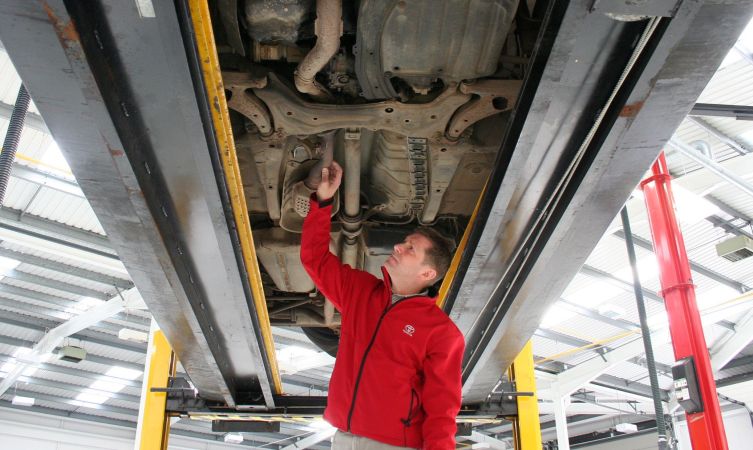
We had no doubt that extra remedial work would come to light during the course of our rehabilitation programme, but in the meantime, we gathered a collection of new original equipment steel wheels and brake components, as well as new tyres, sections of the exhaust system, a full-service kit and various trims and fixings.
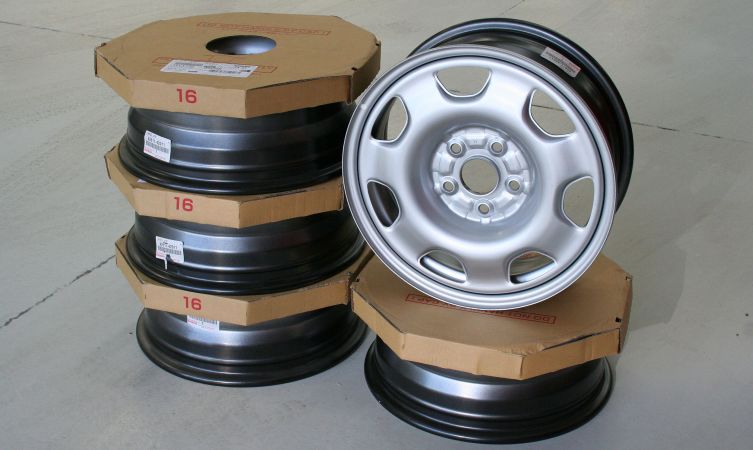
Toyota RAV4 Restoration: part two
It was all going so well. At first glance, our Toyota RAV4 restoration project appeared to have shrugged off the rigours of 20 British winters without too much trouble. The underside and both sills were rock solid, and although the paintwork was looking a little tired, the monocoque bodyshell that was so novel in a four-wheel drive vehicle at the time of the RAV4’s launch bore no visible signs of rust.
The previous owner had evidently tried to protect the car in various ways, such as fitting wheel arch extensions, mud flaps and a decorative plastic bull bar, as well as maintaining a regular servicing schedule.
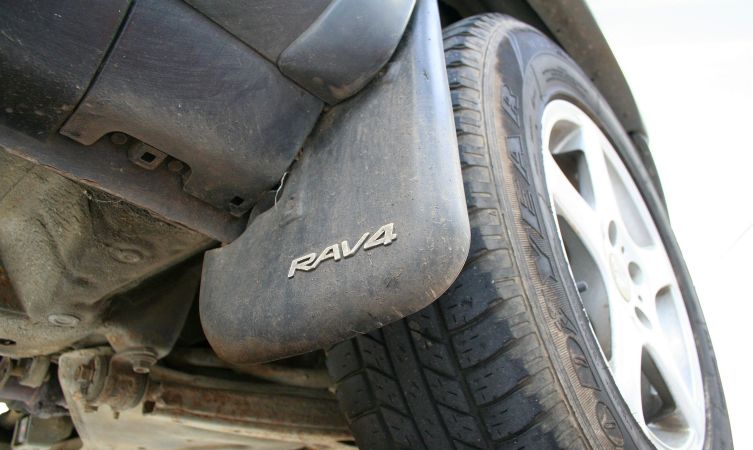
But then the harsh reality of the damage our salt-treated roads can eventually wreak on bodywork was exposed when the optional plastic wheel arch extensions were removed during the early stages of our clean-up regime.
What lurked behind revealed the result of salty moisture being trapped close to the bodywork, a protected environment that offered an opportunity for rust to get a grip on the bodyshell without being noticed. Ironically, the RAV4’s bodywork would probably have survived much better without these extensions.
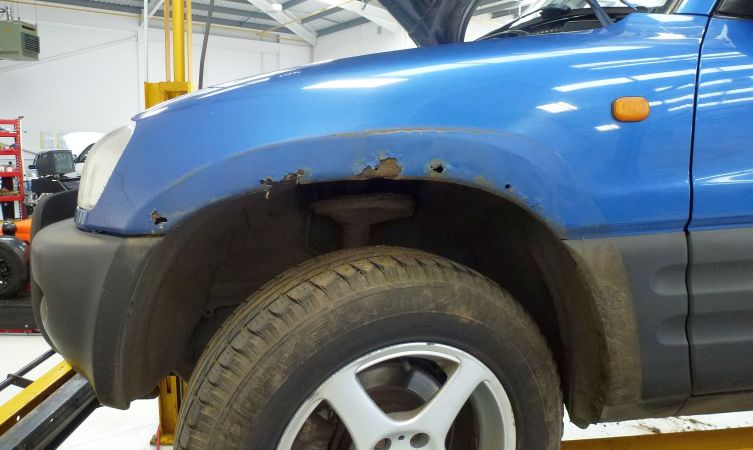
Of course, we are a little disappointed by these findings and now realised that the cost of restoration would escalate beyond our initial expectations. But we were also determined to keep going and root out all the rot with professional repairs. So the RAV4 was taken away on a trailer to one of Toyota’s approved bodyshops.
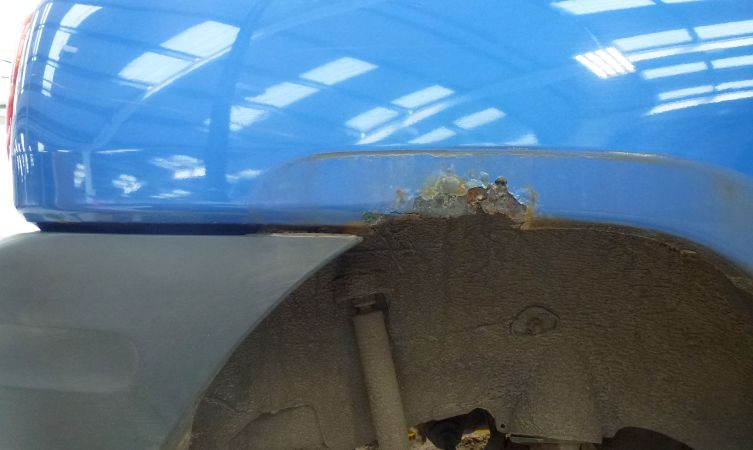
There was one bonus that could be derived from this extra work. While the RAV4 was in the body shop undergoing surgery, the opportunity now presented itself to replace the entire roof panel and interior headlining, which had been forced to accept a rudimentary aftermarket sunroof at some point in the car’s history.
Not only was this an eyesore that ruined the car’s originality, we knew that fitting it had removed one of the three important cross braces connecting and reinforcing both sides of the car (see image below). In view of these factors, we couldn’t wait to restore the car to factory specification.
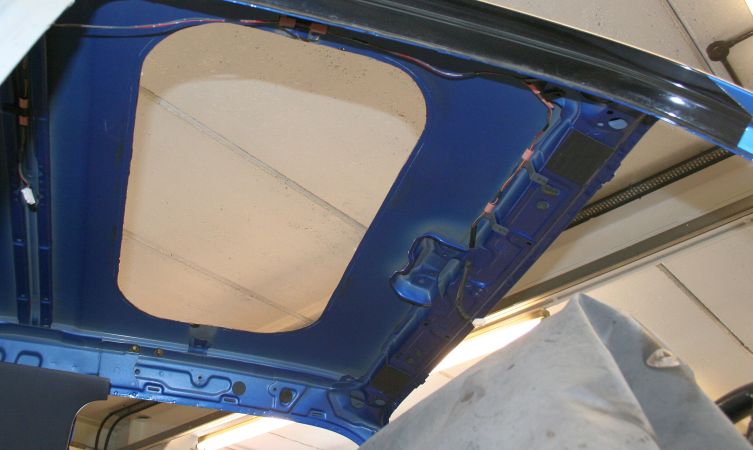
In order to do this, we bought an additional, similarly aged RAV4 to use as a donor vehicle. It had not been looked after very well and was in poor overall condition, but the roof was sound and had not been cut open. Handily, the car also donated a number of original trim pieces that would otherwise be difficult to source brand-new.
As you can see from the picture below, no time was wasted retrieving these items from the donor car – removal of the roof being a relatively simple but painstaking process of drilling out the numerous spot welds along the drainage channels and lifting the panel away. Little did we know it at the time but this level of effort would set the tone for the rest of the restoration.
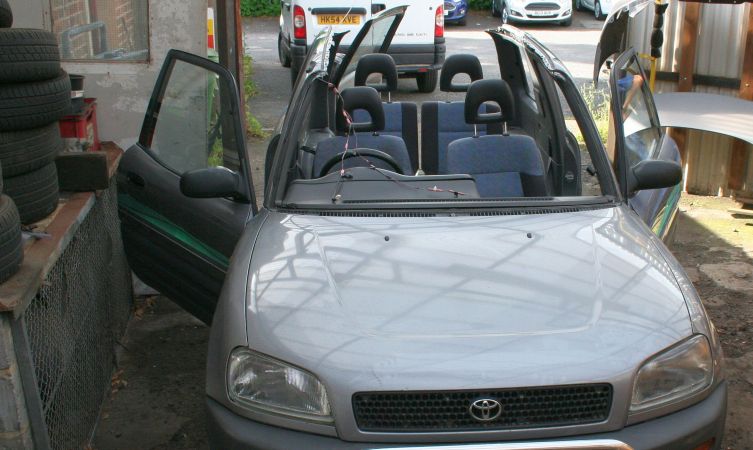
Toyota RAV4 Restoration: part three
Having been whisked off to a professional body shop to restore and repaint the bodywork, work began by stripping our Toyota RAV4 restoration project car to its birthday suit, so to speak. It was our intention to do a thorough job and root out every last scrap of oxidised metal.
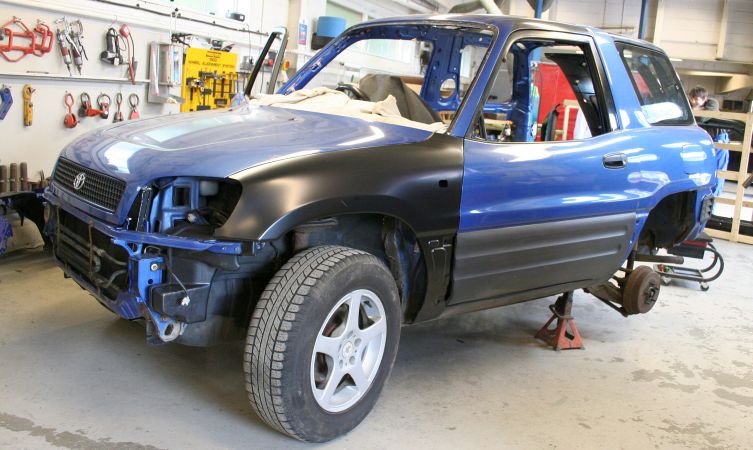
Replacing the bolt-on front wings with new original equipment panels was simple, and the entire lengths of both sills were confirmed once again as being rock-solid. However, further investigation of the oxidised patches that had lurked unseen behind the plastic wheel arch extension on the offside rear quarter panel revealed that rust had spread into the connection with the outer arch.
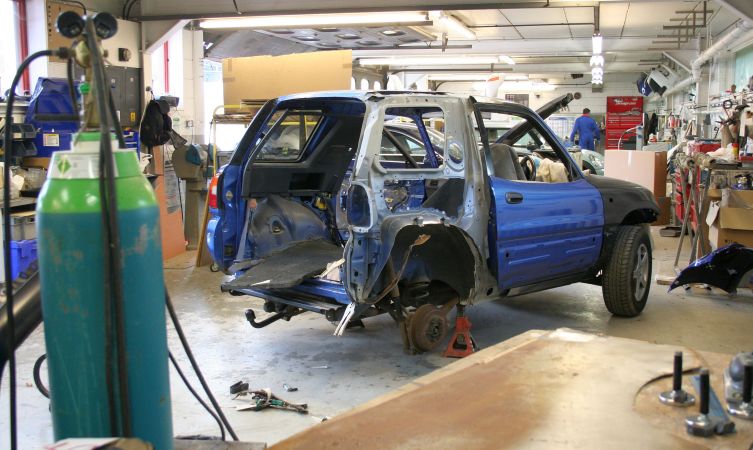
After ascertaining that a new replacement rear quarter was available from Toyota, the original panel was removed in its entirety, all the way to its connections to the high-strength reinforcement bars across the roof, and discarded. This allowed easy access to the outer arch, the affected portions of which were cut away so that only clean, fresh metal remained.
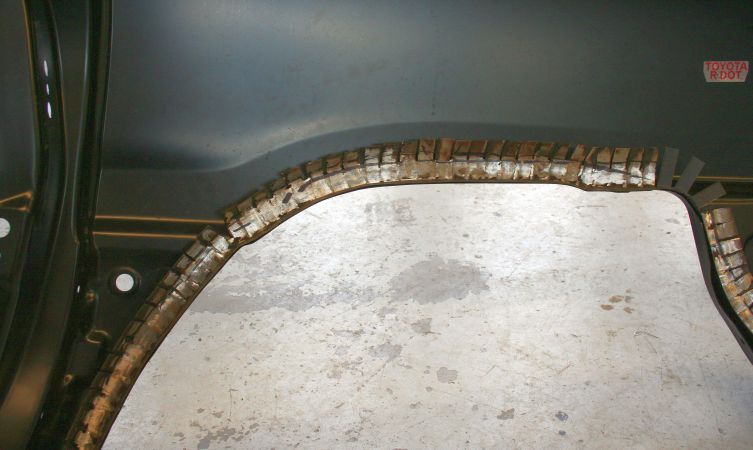
As the rest of the inner arch and inner quarter panel were solid, new metal had to be fabricated to connect the outer arch to the outer bodywork. This was achieved by welding a crescent-shaped sliver of metal around the former to a length of metal tabs around the inner arch radius of the latter. Essentially, the principle of fixing tabs to the underside of an adjacent panel is similar to that required to build our Toyota GT86 paper cut-outs, albeit on a 1:1 scale.
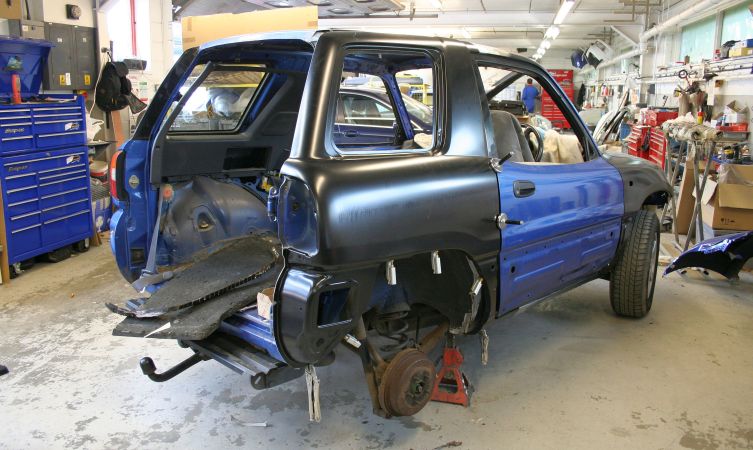
A similar amount of work was necessary on the opposite quarter, only this time restricted to the area around the fuel filler and outer wheel arch.
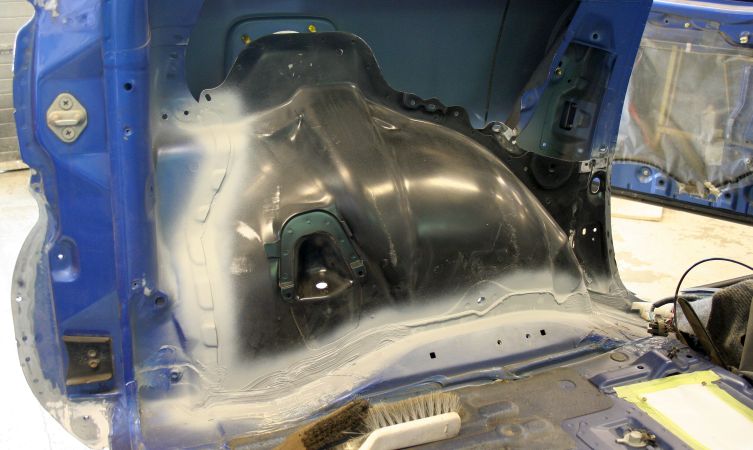
As a much more complex moulding, it was not viable to custom fabricate the area from scratch. Bearing in mind that Toyota supplies the new inner quarter panel and outer arch as one assembly, both sections were removed from the RAV4 after drilling out the spot welds. Meanwhile, access to these areas was improved by chopping off the bottom of the outer rear quarter.
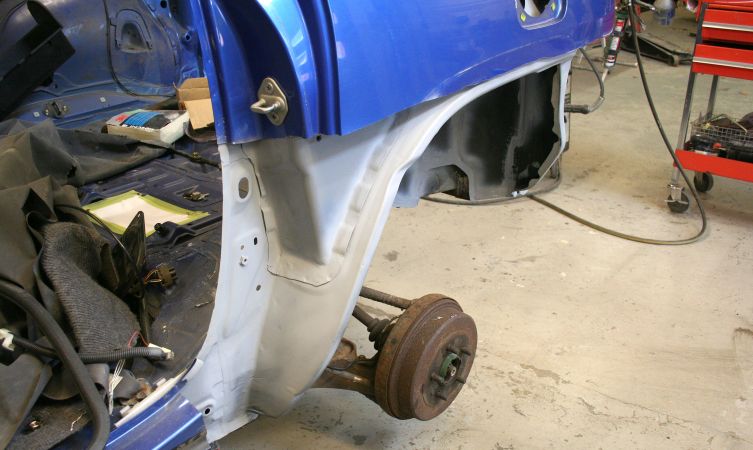
With both rear quarter panels now restored and totally solid with fresh new metal, the replacement roof panel and missing reinforcing cross-member were set in place and spot-welded all the way along the roof channel using the same number of connections as Toyota originally intended.
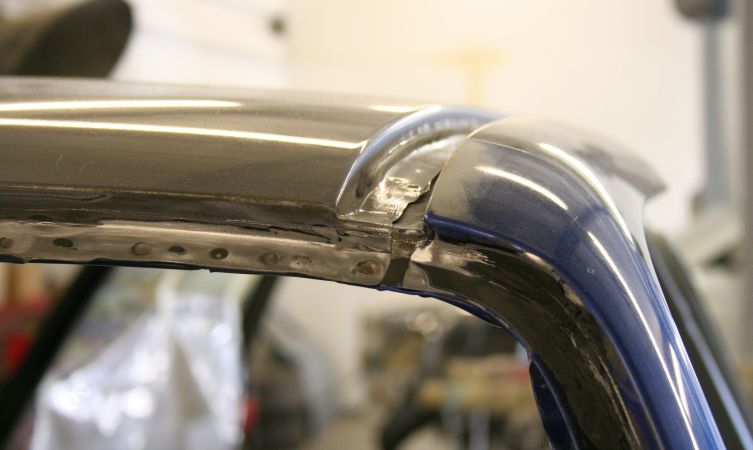
A full respray in the original Bright Blue Metallic (code 8K4) paintwork put the crowning glory on our restored Toyota RAV4. But before the factory paint was rubbed back and primed, photos and careful measurements were taken of where the gloss black accent colour cut across the pillars and rear door so the two-tone finish could be accurately replicated.
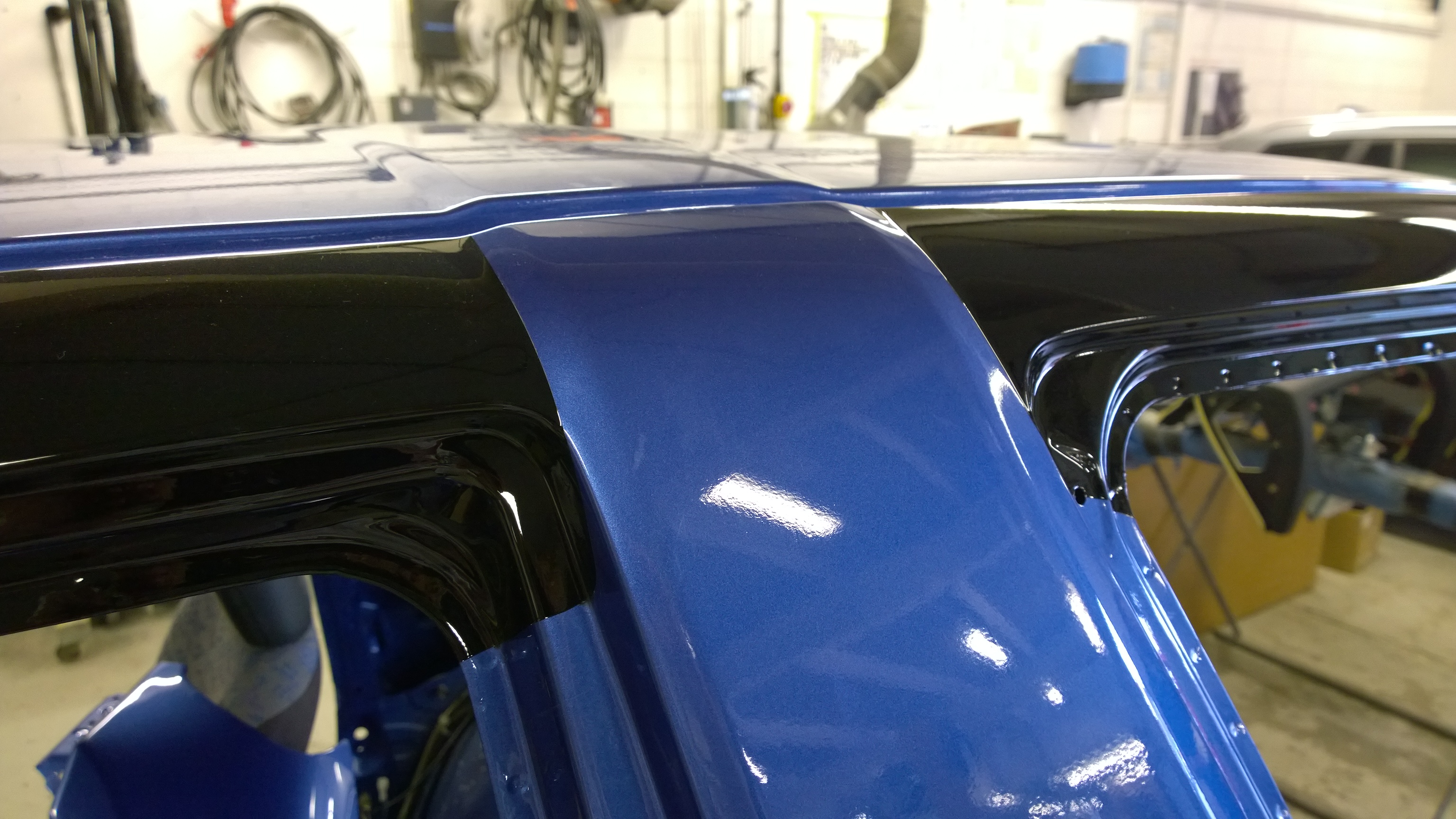
The body restoration of our Toyota RAV4 was now complete, and thanks to the fabrication skills of the body shop it looked as fresh as the day it left the Motomachi plant over 20 years ago.
On its return to our press garage the car was refitted with its new trim and mechanical parts, put through an MOT test – which it passed with flying colours – and given new ‘GS’ badges to adorn the bottom of the B-pillars.
Toyota RAV4 Restoration: part four
Well, here it is. After many months of part-sourcing, body shop surgery and refitting, our Toyota RAV4 restoration project is complete. The first-generation Toyota RAV4 GS is now restored and a fully-fledged member of Toyota GB’s pristine fleet of heritage vehicles.
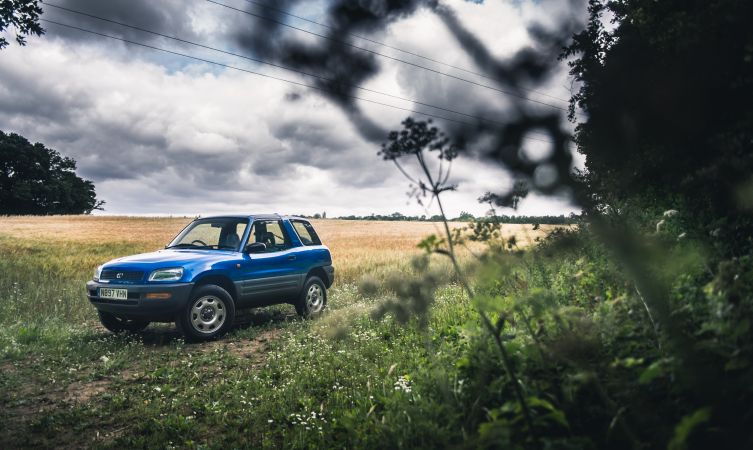
For its official reveal, we decided to try something a little different and match these newly commissioned images with personal comments and quotes from what we understand was the first road test feature published in the UK.
It came from the 14 September 1994 issue of Autocar magazine, where Toyota’s novel take on the four-wheel drive market was compared against the Ford Escort RS2000 4×4, a car it described as “the best-handling Escort this side of the Cossie”.
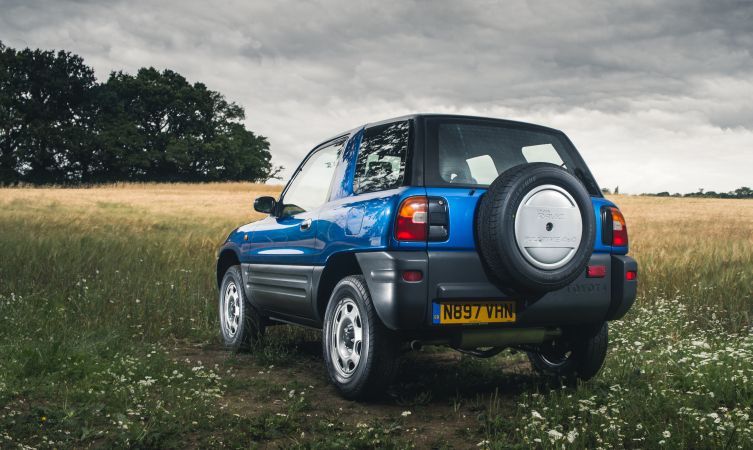
Why were these seemingly different vehicles pitched against each other for this inaugural feature?
Both offered four-wheel drive running gear, of course. But while the Escort was seen as the latest standard-bearer in a traditional hot hatch mould, the brand-new Toyota RAV4 was an intriguing solution that capitalised on two waves of discontent sweeping through the marketplace.

Car buyers looking for affordable fun had already cooled to hot hatches and begun shifting their attention to off-road vehicles in an attempt to escape soaring insurance premiums. Because of this, sales of off-roaders had gone through the roof.
However, once the novelty of being able to cross a muddy field wore off, these same enthusiasts realised that it didn’t matter how many lifestyle accessories you adorned them with, big old off-roaders with ladder frame underpinnings and relatively unsophisticated suspension set-ups were nowhere near as much fun to throw around on country roads as a little hot hatch.
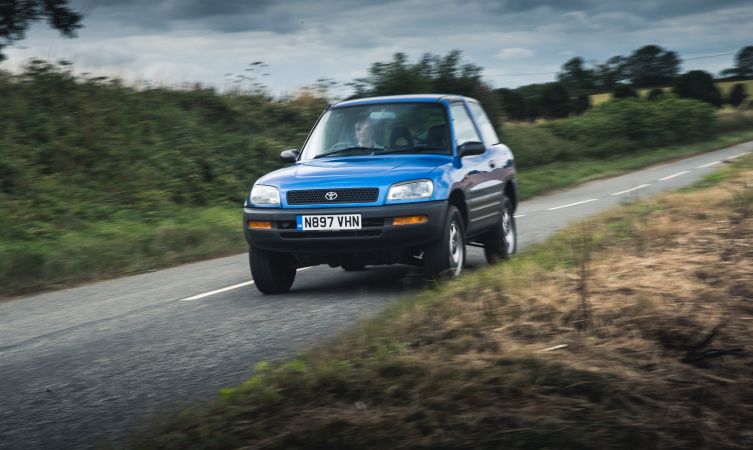
Toyota had been watching the evolving market closely and produced a new type of vehicle that answered such criticisms. The RAV4 had a monocoque bodyshell, car-like suspension, decent power and a measure of off-road performance.
As Autocar commented: “[Toyota] heard complaints about lack of refinement and truck-like handling and came up with the RAV4, best of the small leisure off-roader breed by a country mile and shaking a mean stick at the hot hatch brigade”.
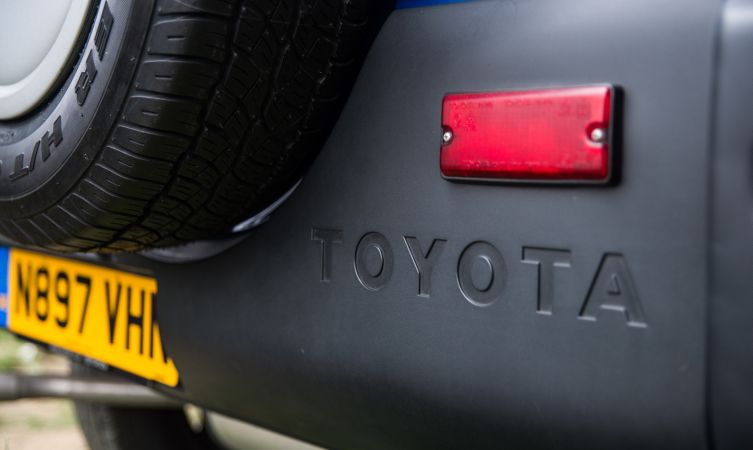
Few of the ingredients within this new ‘recipe’ were genuinely new. For instance, Autocar pointed out that the RAV4’s 2.0-litre 3S-FE four-cylinder engine was “first used in the Camry nearly 10 years ago”. Nevertheless, its balanced 129bhp and 129 lb-ft outputs provided clues to flexibility in straight-line performance that was frequently lacking in some all-or-nothing hot hatch powerplants.
So although the RAV4 was not able to match the Escort’s power figures on paper, the Toyota tipped the scales at almost 100kg less and, crucially, was equipped with a shorter first gear ratio that made it feel like a whippet off the line. Arguably, the RAV4’s eagerness to realistic velocities was deemed more critical in real-world driving.
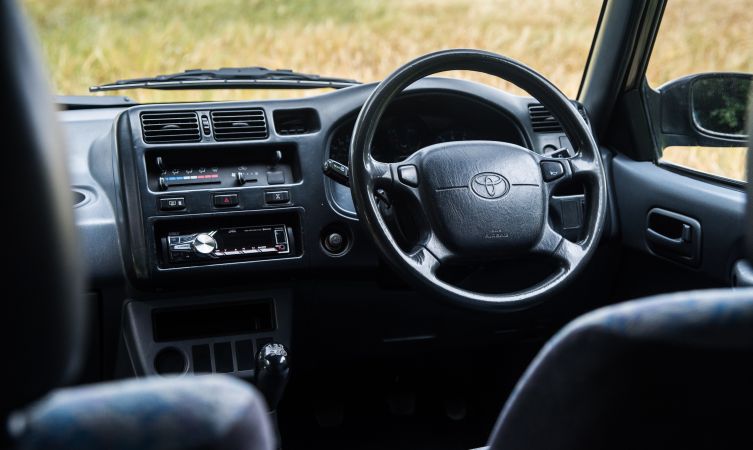
Test figures delivered the hard facts to support this seat-of-the-pants feeling. “Unbelievably,” commented Autocar, “the bulbous-looking RAV4 is quicker than the RS2000 to well beyond the legal limit, where the Escort’s superior aerodynamics eventually put an end to the blushes”.
Timing equipment saw the Toyota hit 60mph from rest in 8.8 seconds, and flex its mid-range muscle from 50-70mph in fifth gear in 11.6 seconds, while the Ford needed 9.4 and 12.0 seconds respectively.
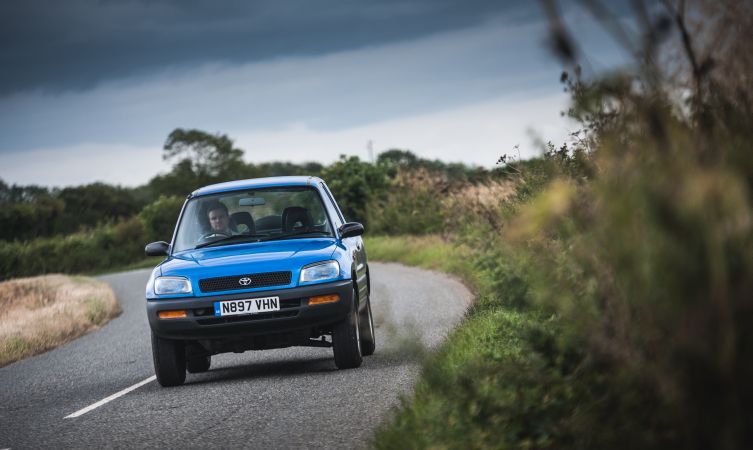
Drivers of heavily soundproofed modern cars will probably find the RAV4’s engine rather vocal when pushed to deliver its all in such acceleration tests. Up front, there is a breathy induction roar which lets you hear how hard the engine is working as effectively as any rev counter, while the relatively short distance to the back end delivers a tenor-like echo from the exhaust system.
There is some merit to being more intimately acquainted with the performance of your vehicle, but the RAV4 is also able to settle down to a 70mph cruise with a reasonably long-legged 3,200rpm showing on the rev counter.

There will be few complaints directed at the RAV4’s control systems. On its magazine road test, the gearshift action was noted for being “light and positive” and that the steering would be a revelation for those coming from traditional off-roaders.
“There isn’t any sloppy vagueness about the straight ahead,” commented Autocar, “and turn-in is remarkably sharp”. In fact, the power-assisted rack was calculated to be quicker lock-to-lock than the RS2000’s, which was already noted for its rapidity.
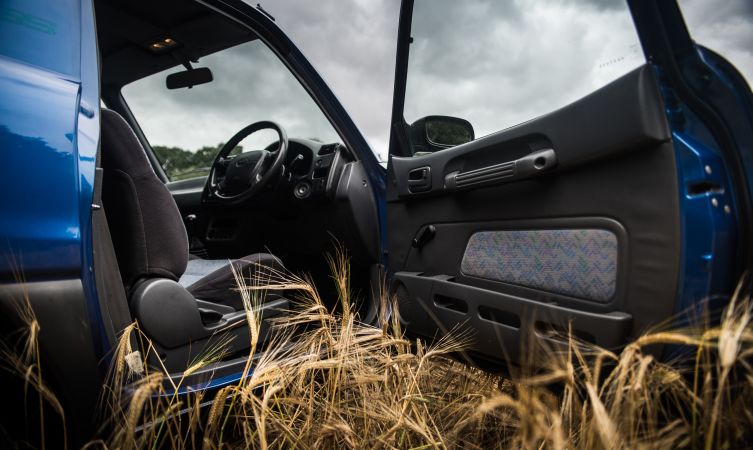
Further assessment of the vehicle’s engineering and architecture corroborated this feeling. Autocar commented: “Toyota went for a lower centre of gravity, by tilting the transverse-mounted engine and doing away with the separate housing for the front differential used on more ‘serious’ off-roaders”.
In contrast to the live axle suspension architecture found in most off-roaders, the RAV4 rode independently on all four wheels and offered a cornering composure that drivers would not normally credit for the class. All of which led the writer to the inevitable conclusion that “the RAV4 is the best-handling off-roader I’ve driven, plain and simple”.
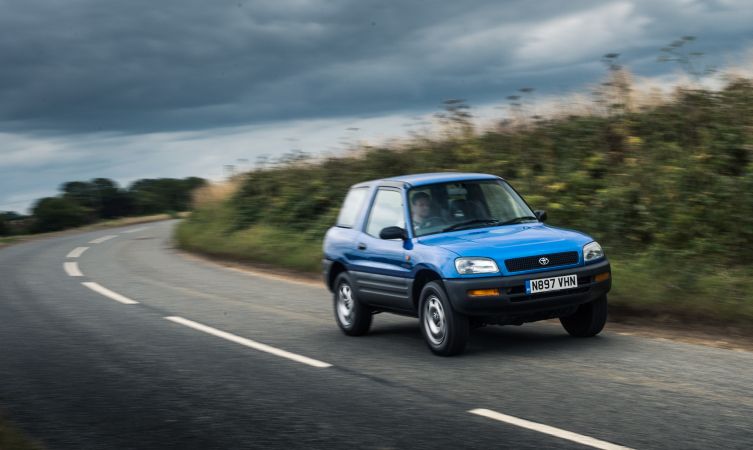
While unusually adept on country lanes, the laws of physics do eventually take over. The chunky 215/70 R16 tyres, Autocar noted, “are a mite too tall for really quick cornering” and there is some body roll.
But then again, that high-riding stance and tall-wall tyre specification come into its own again around town, offering a commanding view over the roofs of other cars and the ability to roll unflustered over just about any urban obstacle. The RAV4’s supermini-size footprint also makes it ideal for the cut and thrust – and parking difficulties – of city environments.

The RAV4’s interior is typical of most Toyotas developed and produced in the Nineties. The controls are big and bold and simple to understand, while the dashboard’s upright design positions the ventilation ports are usefully high for efficient brow cooling. And while the interior plastics may be resolutely monochrome, the colour palette for the upholstery is vibrant and fun, a much better match for the car’s outgoing personality.
A comfortable driving position is easy to find thanks to a height-adjustable steering wheel but modern drivers may find the seat bolsters lacking in lateral support, especially given the car’s appetite for corners. At least the large glass house and elevated position mean that outward vision is superb, so changes in direction can be anticipated early on.

“Being inside the RAV is just good clean fun,” discovered Autocar, but advised potential customers with active families to think twice before signing on the dotted line. Luggage space in the boot is not generous, although the rear seats can be folded flat to increase room considerably. Instead, the article reminded readers that a more practical, five-door model was imminent.

Nevertheless, rear seat space was found to be generous with legroom adequate for passengers up to six-foot tall. And being surrounded by such a large glass area meant the overall impression was one of spaciousness: “All in all, a nicer place to be than the relatively cramped RS”.

Despite the RAV4’s impressive ground clearance and short overhangs, the model was never designed for off-road heroics. There is an electronically-controlled centre-locking differential to haul the car out of trickier situations but there is no low-range gearbox for tackling steep ascents and the road-biased formula of the tyres is not ideal for clawing into the mud. However, the writer had no hesitation in saying that “I’d rather be in the RAV4 if I found myself on a wet sheep track”.
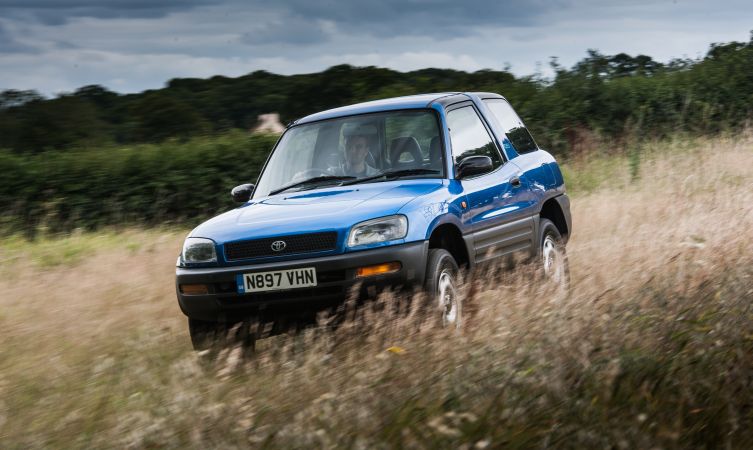
In concluding its comparison of these two four-wheel drive vehicles, Autocar admitted that both the RAV4 and RS2000 had individual charms: “The cute but tough lines of the RAV4 countered the Cossie-esque intent of the RS’s bulging skirts. Around town and on wide open A-roads, the RAV’s superior acceleration and the novelty of it all made the RS turn a paler shade of red”.
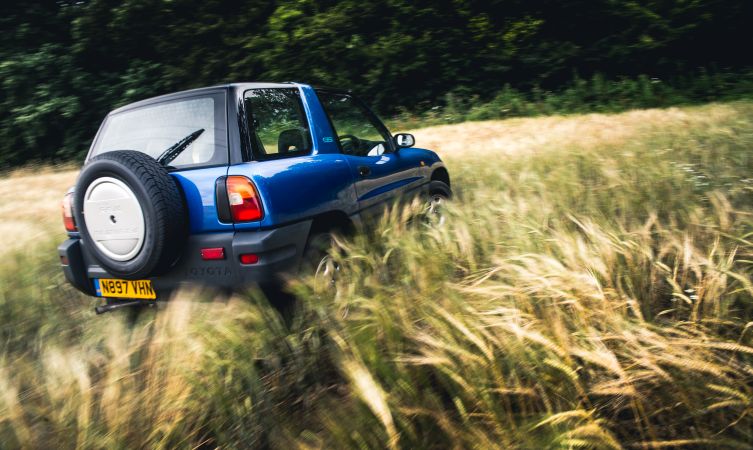
How did the writer think car buyers would react to the novel Toyota RAV4? “With its performance, refinement, space, low insurance and all that designed-in cuteness, the RAV4 will unquestionably hijack more than a few hot hatch hearts.”
More than 20 years on, we are convinced that our fully restored first-generation Toyota RAV4 will begin winning hearts all over again.
All information is correct at the time of publishing.



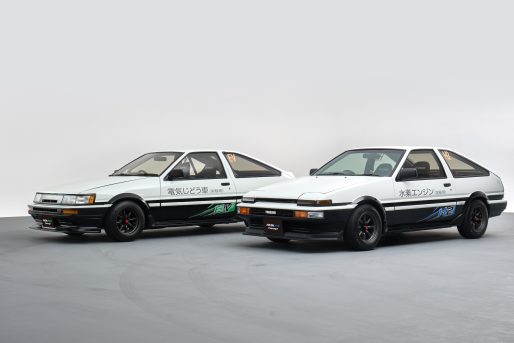

Hi do u have a video for this? I have a rav4 very similar to this and wuld like to restore, a video would be a good guide
Hi Brian,
Thanks for getting in touch. Unfortunately, we don’t have a video of this restoration, but we wish you the best of luck with your own! Many thanks.
I have a june 1994 3 door
I have a Rav4 restoration video series on YouTube!
https://www.youtube.com/playlist?list=PL1_JDBt1LSiImFCzG1QKxOTeZnzUG8uxj&feature=share
Hi Lab Coat Paul! Been following you for a while and just ran across this. So nice to see you here. 🙂
I have a black 3 door and absolutely love it has 86000miles on clock. I would love someone to restore my one for me 🙏😁
Hi Daisy,
Thanks for your comment and your feedback. It’s great to hear that you’re loving your RAV4!
We’re not currently looking for another RAV4 restoration project, but we wish you the best of luck with yours.
Thanks.
Hi, do you have a list of suppliers that you obtained your parts, as these mk1 ravs are starting to get more and more difficult for parts especially for rear trailing arms etc.
As i drive a mk1 rav everyday and restoring would be of great help.
Thanks.
Hi Paul, thanks for your comment. Unfortunately, we do not have any suggestions in terms of parts supply. For older vehicles, the online owner’s forums are always worth keeping an eye on. How is your RAV4 doing?
Hi, I have a Rav4 Mk1 1998 Freesport 3 door, I need the L/H Protective Strip for the front bumper, they no longer make them so does anyone know where i can get it? or the front bumper with both strips.
Ray
I have a 1995 3 door quite similar to the one being restored here. I’m having similar issues not being able to source parts for mine as I’m in dyer need of a clutch assembly for A/C compressor. My local Toyota dealer fitted brand new compressor but used old clutch and it’s just packed in.
Hi Darren, thanks for getting in touch.
We are sorry to hear you are experiencing these issues.
We would recommend re-contacting your Toyota Centre to receive guidance and support with this.
Thanks.
Do you have any slow burn fuse,s in stock ie 100amp and 20amp for my 1998 rav4 automatic
Hi Martin,
The Parts Department at your nearest Toyota Centre would be best placed to assist you further with this query.
Thanks.
I have a 1996 Toyota Rav 4GX 3 door with twin sunroofs which has just failed it’s MOT .. and my garage says spare parts are no longer available?
Does anyone know of any garage that will repair these older models in Greater London area? Also is it worth keeping as a classic car?
I’ve owned it from new and don’t want to scrap it due to the ULEZ!!